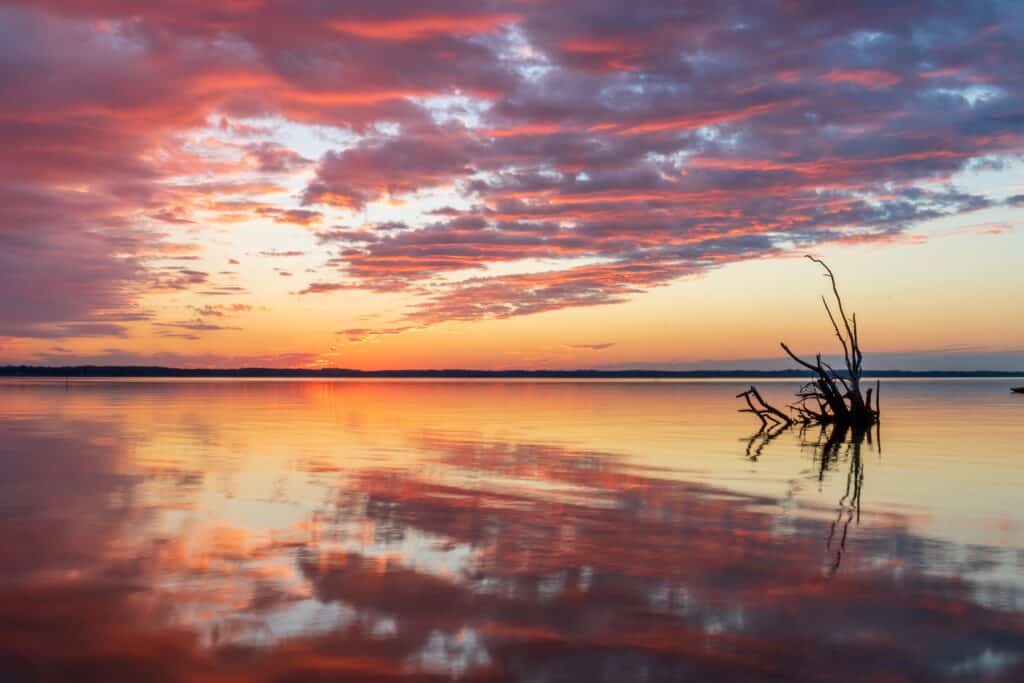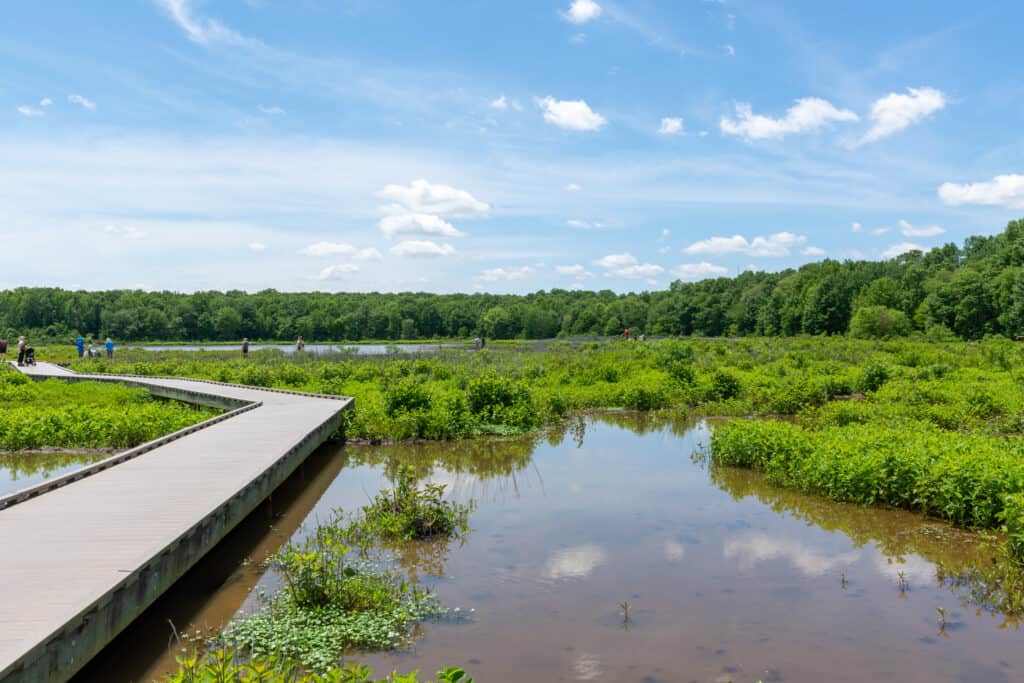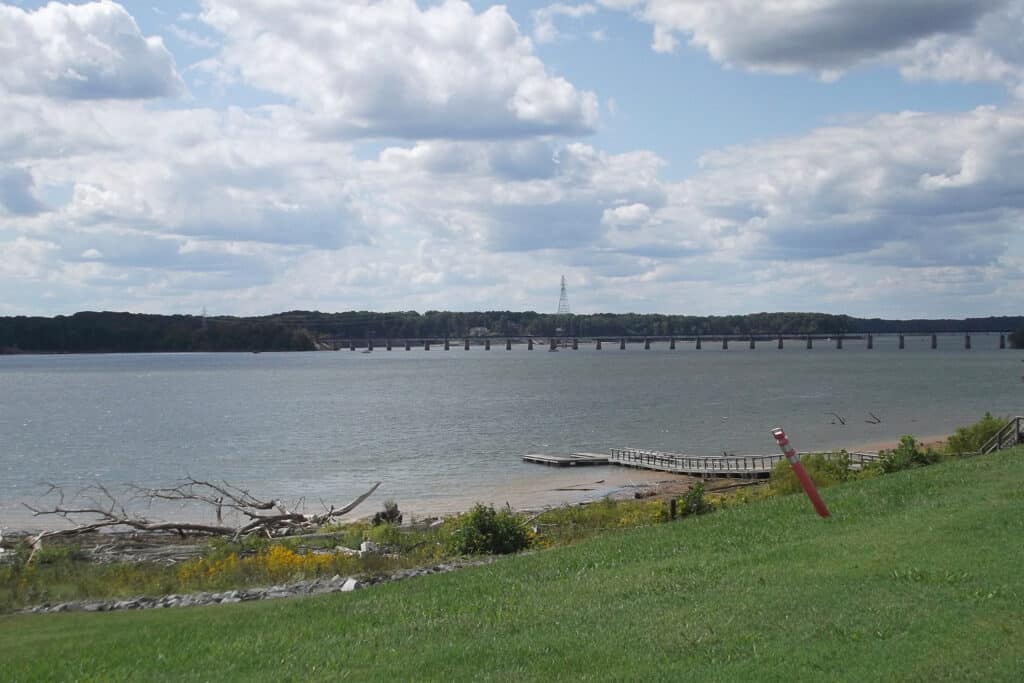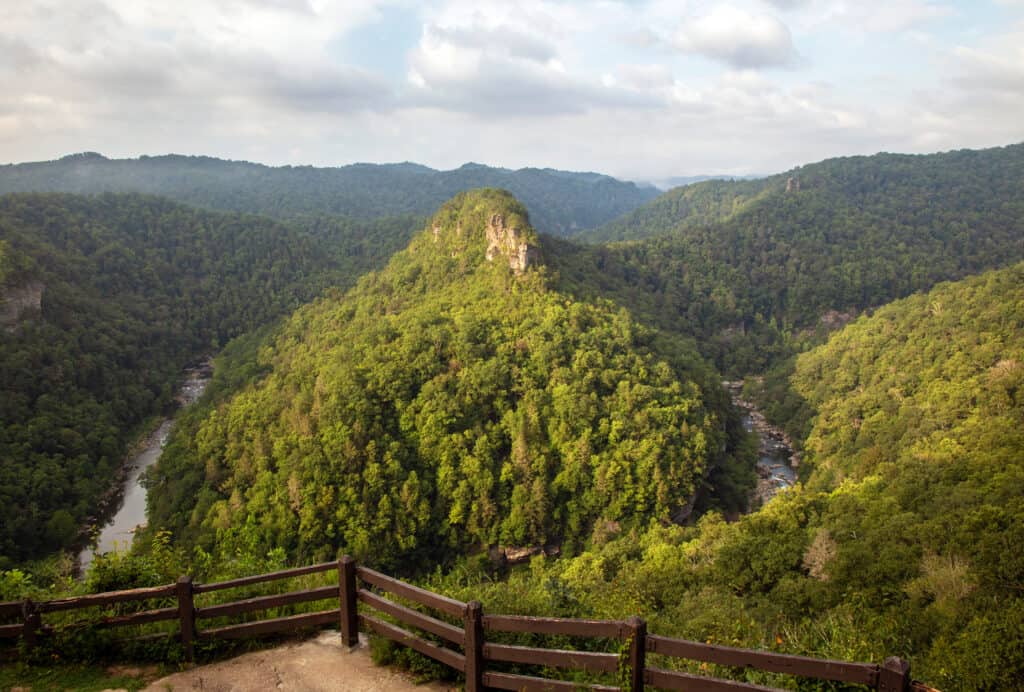Virginia is a beautiful state that experiences each season. There are mountains, lakes, rivers, and even beaches to visit. The landscape is beautiful, and with the changing seasons, there will bring plenty of opportunities to spot amazing birds—especially if you visit one of their state and national parks. Read on to learn more about the best places to bird-watch in Virginia.
1. Belle Isle State Park
Size: 733 acres
Number of bird species spotted: 167
Birds to spot: Yellow-billed Cuckoo, Black Vulture, Osprey, Acadian Flycatcher, White-eyed Vireo
This park is comprised of tidal wetlands, farmland, and upland forests. It also has seven miles of shoreline as well as access to two creeks (Mulberry and Deep creek). There are 733 acres of heavily wooded land interspersed with walking trails that give access to the river.
With the diversity that this park has to offer, you can find many different types of birds including birds of prey like osprey, hawks, bald eagles, and blue herons. In the summertime, you can expect to find birds like blue grosbeaks, tanagers, orchard orioles, and indigo buntings. There are also chances to spot yellow-throated warblers near the park’s large sycamore trees that are located near the river. Bald eagles can also be found nesting through the winter season.
Beyond amazing bird-watching opportunities, the park also offers many different types of recreational activities to enjoy. Some of those include hiking, bike riding, camping, and picnic shelters. And if you need to, you can also rent canoes, bicycles, or kayaks to help you explore the land. Belle Isle also provides overnight lodging for guests at their Bel Air and Bel Air Guest House.

Belle Isle in Virginia Is One of The State’s Best Bird-Watching Locations
©Dalton Flowers/Shutterstock.com
2. Huntley Meadows Park
Size: 1,500 acres
Number of bird species spotted: 250
Birds to spot: yellow-billed cuckoo, red-shouldered hawk, eastern wood-pewee, Acadian flycatcher, the red-headed woodpecker, great horned owls, barred owls, and wild turkeys
The Huntley Meadows Park is home to beautiful forests and meadows with wildflowers. There are also vast wetlands, all of which make for great bird-watching opportunities. The habitats of Huntley Meadows Park include wetlands, woods, lakes, and rivers. Within these habitats, you will be able to find a wide variety of species of birds. This location is also a prime stopping point for migrating birds.
Some of the birds you will find at Huntley Meadows Park include the yellow-billed cuckoo, red-shouldered hawk, eastern wood-pewee, Acadian flycatcher, and the red-headed woodpecker. These birds breed in the woods at the park during the summertime. You can also find great horned owls, barred owls, wild turkeys, and pileated woodpeckers at the park year-round.
There are also programs that are held here at the park that teaches visitors about birds and there are even scout birding badges that can be earned throughout the parks. If you are looking for a social event, there is a casual group of birdwatchers that meet together on Monday mornings each week for birdwatching at the park. You can contact the park for more information about joining the Monday group.

Huntley Meadows Park Is Home To over 250 Bird Species
©Liz Albro Photography/Shutterstock.com
3. John H. Kerr Dam and Reservoir
Size: 10,000 acres of wildlife management area, 50,000-acre lake
Number of bird species spotted: 198
Birds to spot: belted kingfisher, yellow-billed cuckoo, European starling, Acadian flycatcher, Cooper’s hawk, white-eyed vireo, and wood thrush
John, H. Kerr Dam and Reservoir is sometimes referred to as Buggs Island Lake. The lake extends over 50,000 acres along the Roanoke River for 39 miles. Along this river, there are 800 miles of wooded shoreline that go throughout Virginia and North Carolina. There are 26 different wildlife management areas that total up to over 10,000 acres of land.
Some of the types of birds you can find interspersed throughout the reservoir include belted kingfisher, yellow-billed cuckoo, European starling, Acadian flycatcher, Cooper’s hawk, white-eyed vireo, and wood thrush. These are just a few of the different types of birds there are to spot here. The reservoir offers a variety of habitats where you will find even more birds to discover.
Aside from birdwatching, the John. H. Kerr Dam and Reservoir also offers activities for you and your family to enjoy, including hiking, water sports, boating, camping, fishing, environmental education, picnicking, and hotel/lodging. There are 30 different recreational areas located around the reservoir that will give you plenty of fun things to do, even after you’ve done all of the bird-watching.

The Kerr Dam in Virginia has 26 Different Wildlife Management Areas
©J. M. Pavlic III/Shutterstock.com
4. Peaks of Otter
Size: 4,000 acres
Number of bird species spotted: 111
Birds to spot: black-throated blue, cerulean, worm-eating, blackburnian, and Canada warblers, wood thrush, ravens, scarlet tanagers, blue-headed vireo, and rose-breasted grosbeaks.
This is a natural landmark in Virginia that is known for its beautifully high peaks and mountains. It has cool temperatures in the summer and the three peaks that make up The Peaks of Otter are named Sharp Top, Flat Top, and Harkening Hill. Native Americans used to visit this land for nearly 8,000 years for its hunting opportunities, as well as travel and for rest. It wasn’t until the mid-1700s that European settlers began to establish the area. Over the years the land was developed into what it is now, with inns, hotels, a restaurant, and many recreational activities, including bird-watching.
At Peaks of Otter, you can find a wide variety of birds including common loon, waterfowl, and raptors soaring high in the sky. These birds can be found in large numbers and are migratory birds that can be spotted during the spring. In the summer, you will be able to find birds like black-throated blue, cerulean, worm-eating, blackburnian, and Canada warblers. You will also find scarlet tanager, blue-headed vireo, and rose-breasted grosbeaks.
At the Peaks of Otter Lodge, you’ll find many fun things to do to coincide with your bird-watching. You can walk along the one-mile round trip path that takes you around Abbott Lake. The Flat Top Mountain Trail is an excellent spot for birdwatching and you can do so while hiking on the trail. You can also hike on the Johnson Farm Trail which goes through a farmstead on a mountain that still stands as it did when it was first built in the 1930s.

Peaks of Otter is A 4,000 Acre Park With Over 100 Bird Species
©Malachi Jacobs/Shutterstock.com
5. Breaks Interstate Park
Size: 4,500 acres
Number of bird species spotted: 151
Birds to spot: hooded warbler, black and white warbler, Swainson’s warbler, blackburnian warbler, and northern parula, sparrows, cardinals, woodpeckers, and chickadees
Breaks Interstate Park is known for its natural beauty. It has deep forests, cliffs on the Breaks Canyon, and the Russel Fork River that all attract some of the most amazing birds for bird-watching. Here at this park, you can find large birds like hawks, vultures, and falcons. There are also bald eagles there if you are lucky enough to spot one.
Some of the other birds that can be found here at Breaks Interstate Park include the hooded warbler, black and white warbler, Swainson’s warbler, blackburnian warbler, and northern parula. Herons, ducks, and other waterfowl can also be found at Beaver Pond, Laurel lake, and the gorge. These are all birds that can be found during the spring and summer in the park.
If you plan to hike on the trails at the park, you may be able to spot sparrows, cardinals, woodpeckers, and chickadees. There are many other types of birds that can be found as well. The Breaks Interstate Park is full of lush habitats that are home to so many varieties of birds, making it a great spot for bird-watchers.

Interstate Parks is A 4,500 Acre Park That
Houses Sparrows
, Cardinals, Woodpeckers, and more
©David B. Petersen/Shutterstock.com
Up Next
- Georgia’s 5 Best Birdwatching Spots This Summer
- Florida’s 5 Best Bird Watching Spots This Summer
- California’s 4 Best Bird Watching Spots
- The Top 10 Fastest Birds in the World
- 12 Must-See Birds In Virginia
The photo featured at the top of this post is © Stellar_bones/Shutterstock.com
Sources
- Virginia.gov, Available here: https://www.dcr.virginia.gov/state-parks/belle-isle
- eBird, Available here: https://ebird.org/hotspot/L718318
- Fairfax County Virginia, Available here: https://www.fairfaxcounty.gov/parks/birdwatching
- Recreation.gov, Available here: https://www.recreation.gov/camping/gateways/458
- Peaks of Otter, Available here: https://www.peaksofotter.com/about-us/maps-directions
- Breaks Park, Available here: https://www.breakspark.com/bird-watching
FAQs (Frequently Asked Questions)
What kind of birds are in Virginia?
You can find cardinals, the American robin, downy woodpecker, common starling, house finch, and many others in Virginia.
Are sparrows common in Virginia?
Yes, song sparrows are commonly found in Virginia. They live in wet, shrubby areas.
Are there ravens in Virginia?
Yes, Virginia has common ravens.
Thank you for reading! Have some feedback for us? Contact the AZ Animals editorial team.






